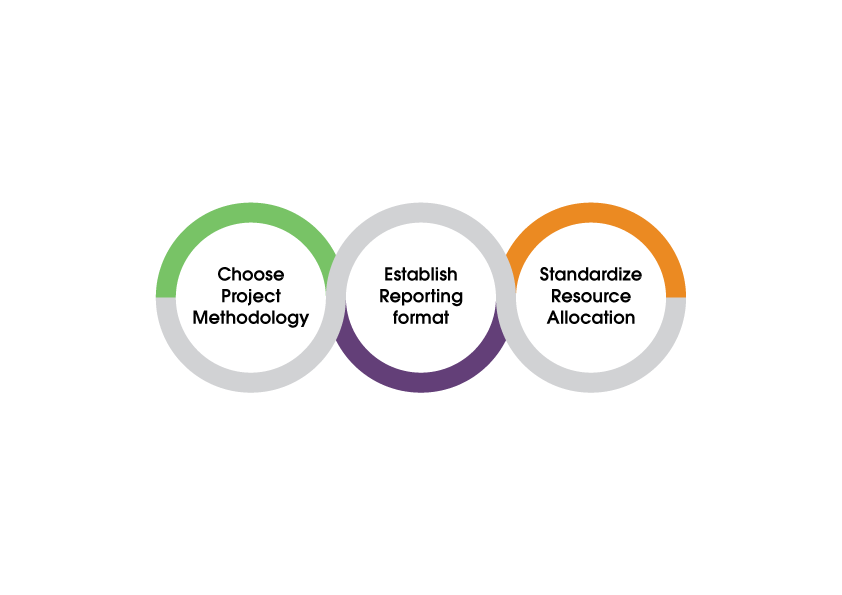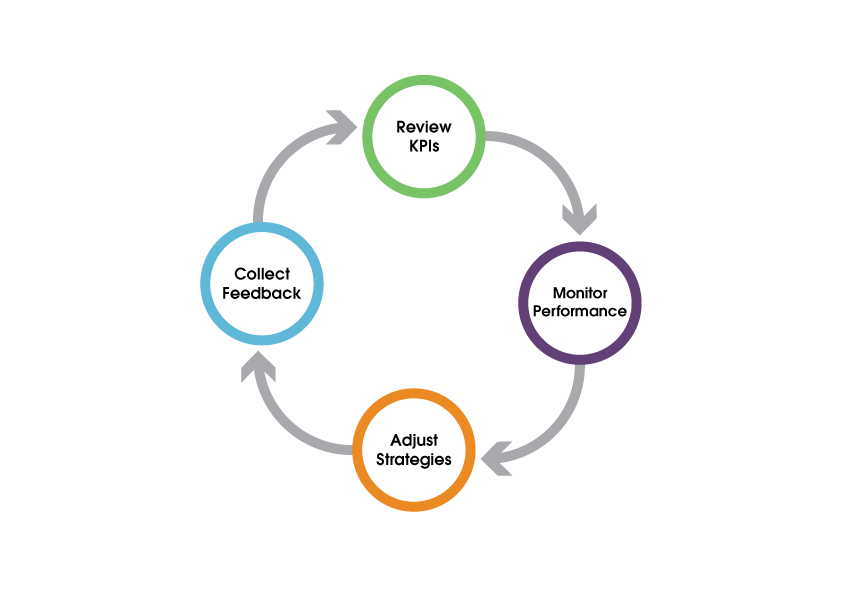Building a Project Management Office (PMO) is often seen as the silver bullet for managing large-scale projects and aligning them with business strategy. But many PMOs fall short of their potential because they’re not designed to support strategic alignment right from the start.
According to the PMI Insitute PMOs increasingly struggle to meet organizations’ expectations of them and continue to fail (25% within a year of inception and 50% within 2 years) .
Setting up a PMO that drives strategic goals and optimizes resources requires careful planning and execution – especially if you aim to do it within 90 days.
Here are the 6 essential steps to ensure your PMO delivers maximum strategic value.
Step 1: Assess Organizational Readiness
Before diving into the details of setting up your PMO, it’s crucial to assess where your organization currently stands. This readiness assessment should answer key questions like:
- Do you have executive support for establishing a PMO?
- Are your teams equipped with the necessary skills and tools to follow PMO processes?
- Is there a clear need for centralizing project management, or are resources being stretched thin?
Start by conducting a PMO Readiness Assessment to identify gaps in resources, processes, and alignment with company goals. This will set the foundation for success and ensure your PMO addresses the right problems.

Step 2: Define the PMO’s Purpose and Strategic Objectives
Many PMOs fail because they lack a clear purpose tied to the broader business strategy. Instead of focusing on day-to-day project management, a well-structured PMO should aim to connect every project with the company’s strategic goals.
To define your PMO’s purpose:
- Collaborate with executives and department heads to identify strategic priorities.
- Understand how each project contributes to those larger objectives.
- Create KPIs for the PMO that measure its ability to deliver on these priorities.

This clarity will help the PMO drive initiatives that create business impact rather than just focusing on project timelines and budgets.
Step 3: Establish a Governance Framework
Governance is the backbone of any successful PMO. It outlines how decisions are made, who holds accountability, and how resources are allocated. For strategic alignment, your governance framework should ensure that every project supports key business initiatives.
Here’s how to build an effective governance framework:

- Define project selection criteria based on business priorities.
- Set up a PMO Steering Committee to review and approve high-level decisions.
- Assign clear roles and responsibilities to the PMO leader, project managers, and stakeholders.
A solid governance framework ensures that the PMO not only runs smoothly but also delivers on the broader business strategy.
Step 4: Standardize Processes and Methodologies
One of the main reasons companies establish PMOs is to standardize processes across the organization. Without standardized methodologies, projects often become fragmented, resulting in misaligned outcomes. Implementing consistent processes helps ensure that all teams are working towards common objectives and utilizing resources efficiently.
Key considerations for standardization:
- Choose a project management methodology (e.g., Agile, Waterfall, or hybrid) that aligns with your company’s culture and goals.
- Establish consistent reporting formats to track progress and provide transparency.
- Standardize resource allocation processes to ensure projects are staffed based on strategic priorities.

These processes make it easier for the PMO to operate as a strategic asset, ensuring all projects are aligned with business goals.
Step 5: Focus on Resource Management and Optimization
Resources – people, time, and money – are the lifeblood of any PMO. Effective resource management is critical for aligning project execution with strategic objectives. If resources aren’t allocated effectively, even the best-laid strategic plans can go off track.
To manage resources effectively:
- Map out current resource utilization across all projects.
- Prioritize projects based on strategic importance, not urgency.
- Use resource planning tools to forecast needs and reallocate as necessary.
Resource optimization ensures that the most critical projects get the attention and support they need, enabling your PMO to deliver on its strategic mandate.
Step 6: Implement an Ongoing Monitoring and Improvement Cycle
Once your PMO is up and running, the work doesn’t stop there. Continuous monitoring and improvement are essential to maintaining alignment with evolving business goals. Set up regular check-ins to assess whether your PMO is still aligned with strategic objectives, and be prepared to adjust as necessary.
Here’s how to build a continuous improvement process:
- Establish a cadence of quarterly reviews to evaluate PMO performance against KPIs.
- Collect feedback from stakeholders to identify areas for improvement.
- Keep executives informed about the PMO’s impact on strategic goals.

By committing to ongoing evaluation, you ensure your PMO stays agile and continues to add value to the business over time.
Final Thoughts
Setting up a PMO in 90 days is ambitious, but with a clear focus on strategic alignment, it’s entirely achievable. By following these six essential steps, you can establish a PMO that not only improves project management but also drives your organization’s long-term goals.
Remember, a successful PMO isn’t just about delivering projects on time and on budget—it’s about making sure those projects contribute to the big-picture strategy that propels your organization forward.
